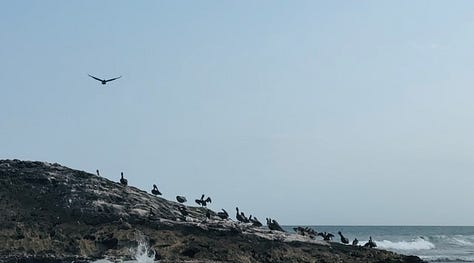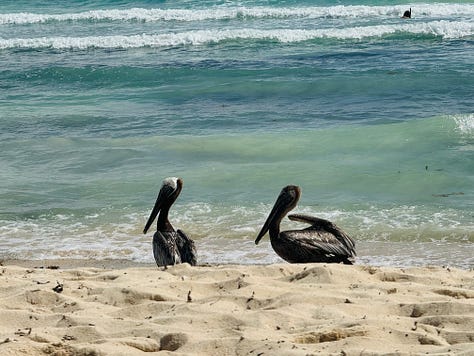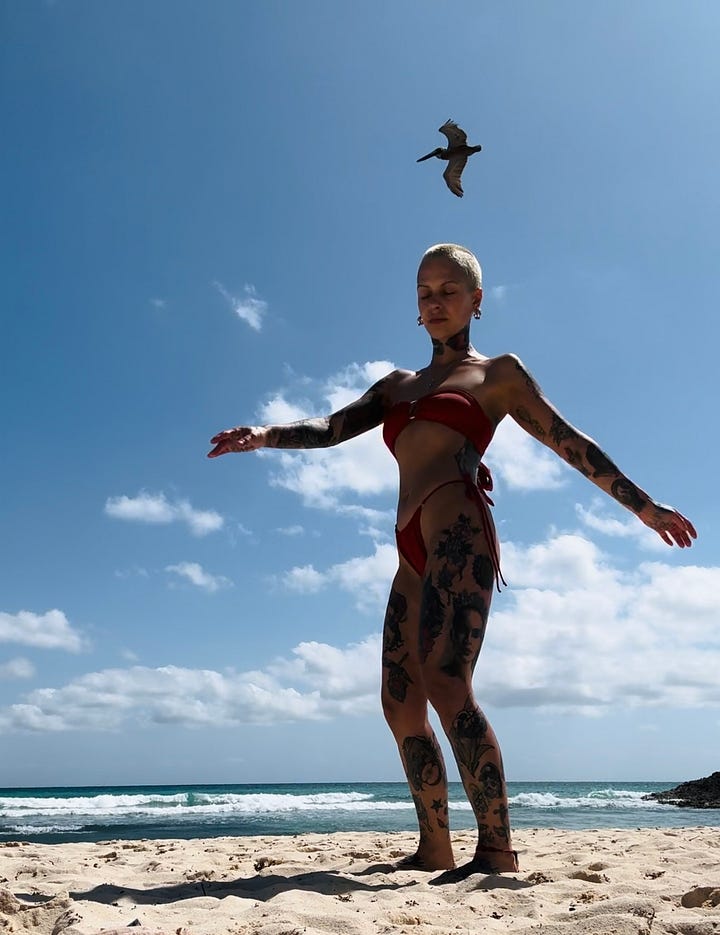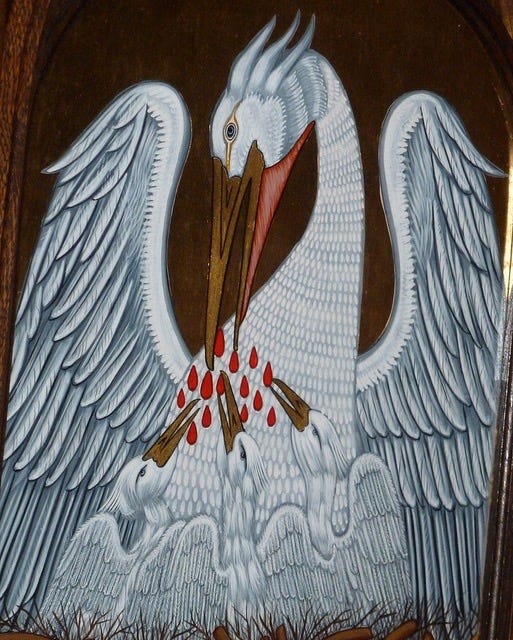T H E D I A G N O S I S
Everything changed overnight, when I woke one morning in Spring 2021 to discover I could no longer walk. What followed was a descent into a labyrinth of medical mysteries that I would traverse for two years.
The first nine months in the mystery were utter agony. As I waited to see a specialist and my body “betrayed” me in new ways; oscillating between complete lifelessness and rigid contortion. Daily life became a chaotic dance between extremes; multiple seizures, limbs that refused to obey, involuntary movements that had me swaying uncontrollably and my jaw clamping shut against food and water. I was rescued from the local swimming pool when my coordination failed, when I crumbled into a pile on the floor of the supermarket, when I got stuck in the middle of the road with my feet frozen to the cement, as if glued in place. Once, I ended up belly-face-down in the dirt lane behind my house writhing like a snake. In another incident, six police officers burst into my home, searching for a person they thought I had harmed - all because an ambulance operator had misunderstood my affected speech in my call for help during a seizure.
When I finally saw a Neurologist, the diagnosis was Functional Neurological Disorder (converted from CPTSD). After just three consultations, I was discharged without a treatment plan. Our medical system, I learned, had no answers for conditions like mine.
But I would not let the darkness take me.
T H E C A L L
Just after the turning of the Mayan New Year in February 2023, I received an invitation to study Traditional Mayan Medicine with a Mayan Mexican elder on the land of Portugal. Central to the Maya Cosmovision is the belief in interconnectedness. The universe, the Earth, & all living beings are bound together in a cosmic dance. Illness of the mind, body or spirit is perceived as a disruption in this intricate web of life, and healing as a restoration of sacred order.
There was no ignoring every cell in my body as it vibrated with a resounding YES, so I made the commitment to attend. Yet, while I had no idea how it would be possible, I knew I was meant to be there. I trusted in my dharma and I trusted in God. And believe it or not, I still trusted in what I felt in my body.
I had chosen to respond to the calling of my soul; despite how disabled I was, how unpredictable my day to day experiences were, and how bleak the future looked. Some may call this blind faith - an unquestioning acceptance of something as true, without tangible proof or evidence, which as you can imagine has its pros and cons. However, in this instance, it served me well. The decision inspired greater devotion and loyalty to my Path, by bolstering me with a life-line of hope and determination. Blind faith undoubtedly comes with an edge of vulnerability, but I was already so deep in those waters, it felt like a natural place to occupy. At the time, I wouldn’t have named my actions as resilience, rather more, a stubbornness and sheer refusal to accept that quality of life. And so I crafted my prayer. I spoke to God. When I say God, I do not mean a man sat upon a throne in the sky, I mean the universal energy of all that is. Every morning I spoke my prayer to the heart of the Earth and the heart of the Sky - carried on the spirited wings of Copal and Pine, adorned with faith. I asked to be guided, I called in support, I requested the systems of knowledge I needed to heal.
Within a matter of weeks, what I prayed for came. I found a Body Psychotherapist to visit for weekly sessions, which was a huge blessing but also came with the catch of a 4.5 hour round trip by train, which would have its own risks and challenges. Yet, there was no hesitation, I was committed to healing. At the same time, I discovered a 12 week coaching certification in a brain-body based healing modality called Neuro-Somatic Intelligence and was gratefully accepted into their Spring cohort. I started both in March of 2023 and to my surprise and delight, 3 months later I flew alone to Portugal to begin my diploma in Traditional Mayan Medicine with Totzil elder Sofia Diaz Hernandez from Chiapas, Mexico and Curandera Marcela Navarrete from Mexico City.
T H E P E L I C A N S
Pelican first came to me in a vision during a powerful breathwork journey with my Body Psychotherapist a couple of weeks before my trip to Portugal. On the final day, I took a taxi to the airport in the early hours of the morning to return home. As the sun rolled over the mountainous landscape of Monchique and its surrounding valleys, my gaze softly soaked up the last visuals of the land that had held me over the past two weeks. Then I saw them. Pelicans upon Pelicans. Rising from their nests situated on top of pylons.
These steel towers - modern totems of progress and power - had been claimed and repurposed by the birds, transformed into sanctuaries. Pelicans, I learned, are masters of adaptation when it comes to nesting sites. While they traditionally nested in remote coastal areas and islands, human development has forced them to adapt, leading them to create colonies in human-made structures - electrical towers, abandoned buildings, artificial platforms. Yet rather than diminishing their essence, this adaptation has become a testament to their resilience. The birds have maintained their communal nature, their ancient patterns of life, while learning to thrive in these transformed landscapes.
I watched as they made homes of these industrial structures, known as “colonial nesting”. I saw in their adaptation a reflection of my own journey through the medical system. I too had to navigate the sterile landscape of modern healthcare - the cold fluorescent lights, the antiseptic corridors, the stark examination rooms, where my complex experience was reduced to clinical checkboxes and diagnostic codes. Where doctors with plain faces saw only symptoms to be catalogued. In those sanitised spaces where the messiness of genuine healing felt unwelcome, where the wildness of the body's intelligence was stripped down to metrics and measurements, I had to find my own way to nurture recovery by learning to read the deeper wisdom my body was speaking.
Just as the pelicans transformed steel pylons into cradles of life, I discovered how to cultivate healing within a framework that seemed designed to deny the very chaos and complexity that healing often requires. Much like the Maya who preserved their sacred knowledge within the very structures meant to erase it, by weaving their ancient practices into the fabric of colonial institutions. The Pelicans' adaptation spoke volumes to me - how life finds a way, how sacred purpose can inhabit seemingly sterile spaces, how survival often means learning to nest in the very structures attempting to override the natural environment.
8 months later, I now found myself on the beach in Tulum, Mexico. Situated in the Yucatan Peninsula. It was my first time returning since the life-changing experience I had living there in 2017. The journey that had initiated me into the wisdom ways of the Maya. I laid on the warm sand in-between swims, where I watched them take flight. Launching from their constellation of rocks, sailing on bronze-tipped wings. Holy hunters, gliding the air in a perfect geometry of hunger & intention. The ocean spread beneath them like an offering, waiting to be pierced by eyes as sharp as ancient prayers. Then came the plunge! A thunderbolt splitting the water’s skin with such elegant violence that even the waves appeared to gasp, alongside the humans witnessing them.
Emerging triumphant with scales flickering like small miracles in their broad breaks, with no question of their fierce grace – the same quality that moves through all wild things, without hesitation in this bright, brutal, beautiful world. They hunt the very waters that sought to swallow them. Each plunge, an act of radical adaptation. Each catch, a defiance of erasure. Like the Mayan codices folded but not destroyed, prayers whispered in their mother tongue beneath imposed crosses, rising with silver wisdom in their mouths; a symbol for the oral tradition, preserved.
I watched their embodiment of resilience, contemplating how the Mayan peoples navigated the turbulent waters of cultural displacement and transformation during colonial syncretism. Their wings, a language older than conquest. Their hunger, a memory more persistent than chains. Their relentless hunting, mirroring the Maya’s ability to adapt, survive and thrive. Despite systemic attempts at cultural destruction, the Mayan spirit remained fundamentally intact.
They were able to preserve and retain the wisdom of their ancestors through clever strategies that protected their spiritual and communal identities against imposed colonial structures. Many actively engaged in what scholars call "strategic syncretism" - appearing to accept Christian practices while maintaining their own beliefs and traditions in private or coded forms. Hiding traditional deities behind Catholic saint imagery, continuing with traditional ceremonies under the guise of Christian festivals and sharing sacred knowledge through word and art.
The symbol of the Pelican itself was in fact part of this colonial “spiritual conquest” era. Depicted through Christian iconography, the Pelican was shown piercing their breast to feed their young with their own heart blood. This was adopted by the Christian faith from Egyptian mythology as a powerful allegory representing Christ’s self-sacrificial death, taking on a symbol of redemptive suffering, devotion and love. The imagery was carefully chosen to be integrated, due to the resonance with Mayan cultural practices of sacrifice, where blood-letting was not merely about death but about spiritual transformation, renewal and connection between the human and divine realms.
Yet, the Pelican myth was born from a misunderstanding of the bird’s feeding behaviour observed by the Egyptians. Pelicans in fact appear to strike their breasts when they're adjusting their throat pouches, preening their feathers and regurgitating food for their young. In ancient Egypt the image of the Pelican was often placed on the walls of tombs, which gave early associations with death, the after-life and renewal. The cavernous depths of the Pelicans beak, echoed in the dark shafted resting places of the deceased. Like the Pelican's misunderstood ritual, what appears as sacrifice transforms:
Blood becomes milk.
Wound becomes sustenance.
Colonial pain transmutes into cultural survival.
My healing journey mirrored the Pelican's dive - a dance of surrender and fierce determination. Each day, I had to pierce through the surface of my own depths, just as they pierced the ocean's skin. When conventional medicine offered no answers, I learned to deepen trust in my body's wisdom, much as the Maya preserved their spiritual essence beneath the waters of colonial pressure.
Bleeding, it feeds.
Wounded, it flies.
Conquered it sings.
What I first saw as symptoms - the seizures, the frozen and floppy limbs, the altered speech - I came to understand differently. Like the Pelican's feeding ritual, long misinterpreted as self-sacrifice but actually an act of nourishment, these were not just expressions of illness. They were my nervous system's encoded attempts at healing, my body's ancient wisdom speaking in a language I had to learn to hear, understand and integrate.
The Pelicans I witnessed in Portugal and Mexico were messengers, arriving at precisely the moment I needed their medicine. Through them, I learned that transformation requires us to dive into unknown waters. That our deepest wounds can become doorways, and our struggles can become strengths. That healing, like the Pelican's hunt, demands both precision and trust - the precision to know when to dive, and the trust to surrender to the plunge.
I found my way back to wholeness not by fighting the current, but by learning to navigate its flow. Through my lived experience of CPTSD and FND, I discovered that resilience lives in this delicate balance; knowing when to dive deep and when to spread our wings, when to surrender and when to soar. I learned from the Pelicans that resilience is not always about remaining unchanged, but more so, about maintaining one’s core essence while navigating radical external transformations. The sacred connection to Self that I feared I'd lost revealed itself in new forms - through my relationship with nature, through ancient wisdom, through the divine life-force that animates all things.
The Pelican's final teaching was the most profound - even in our most solitary dives into the depths of healing, we are never truly alone. We are held by ancient patterns of resilience, carried by ancestral winds, that have lifted countless others through their own transformative waters. Each dive into darkness is also a dive toward light, each wound an invitation to deeper wisdom, every struggle a sacred initiation into our very own source well - where we remember and reconnect with our innate capacity for renewal.








